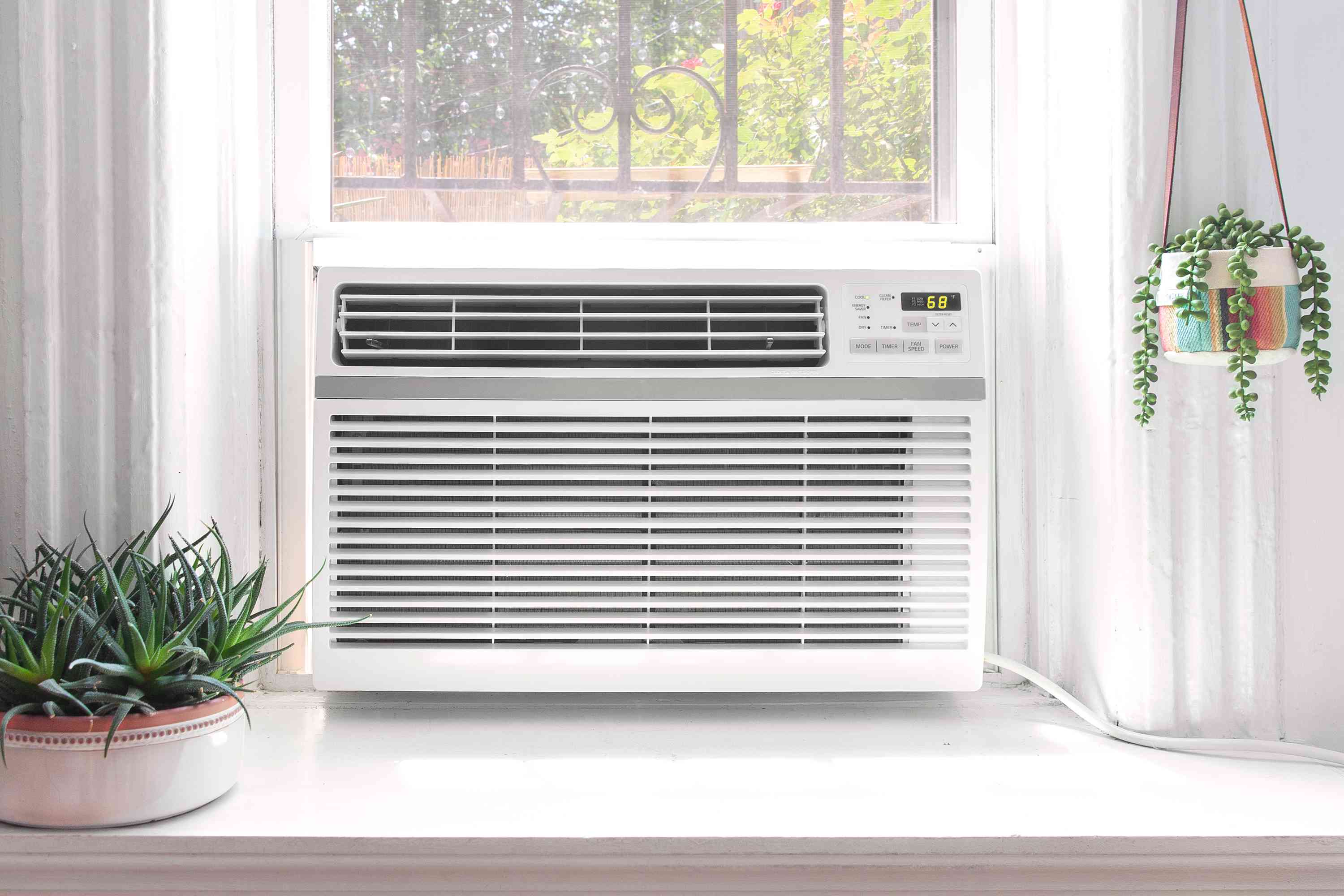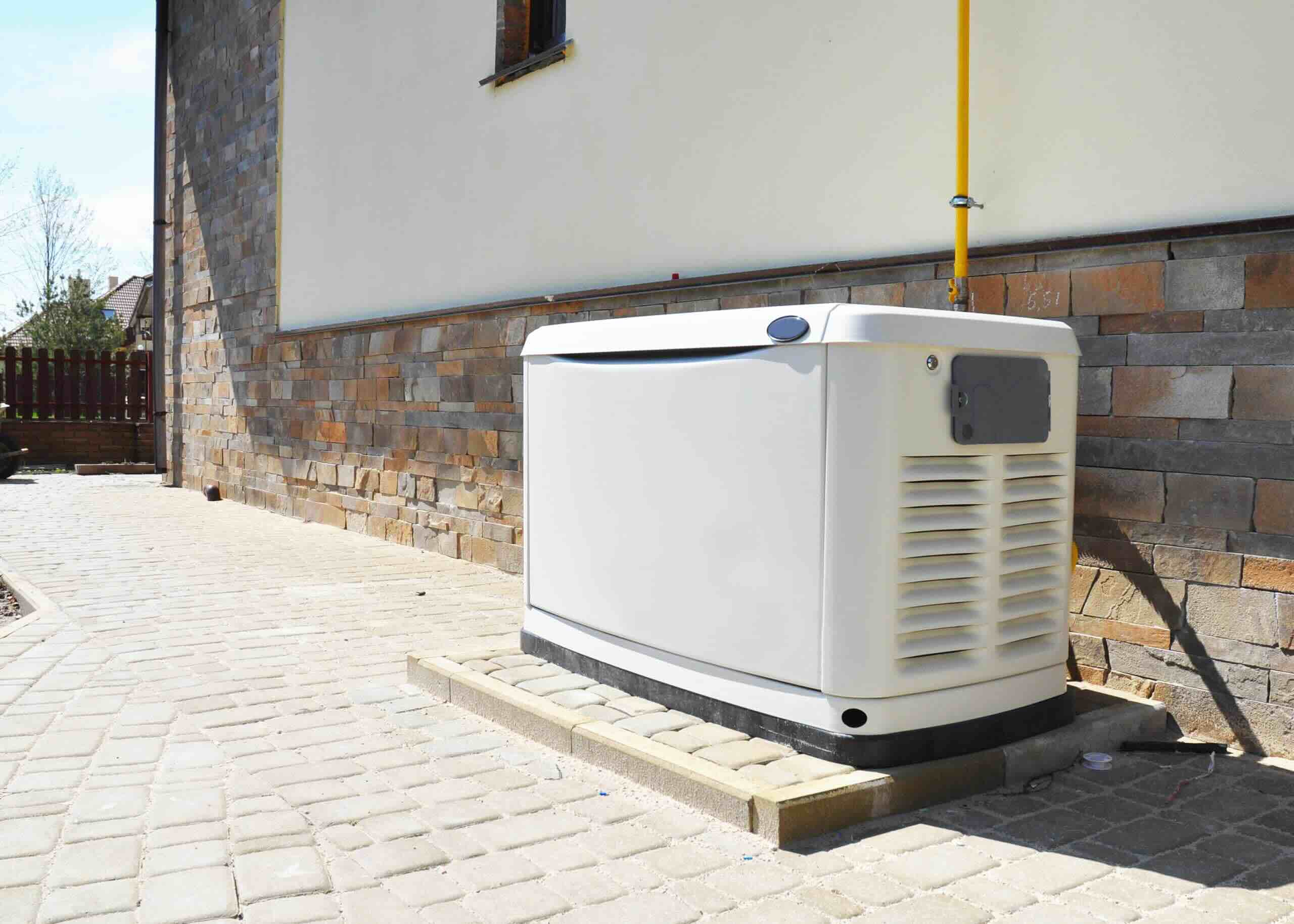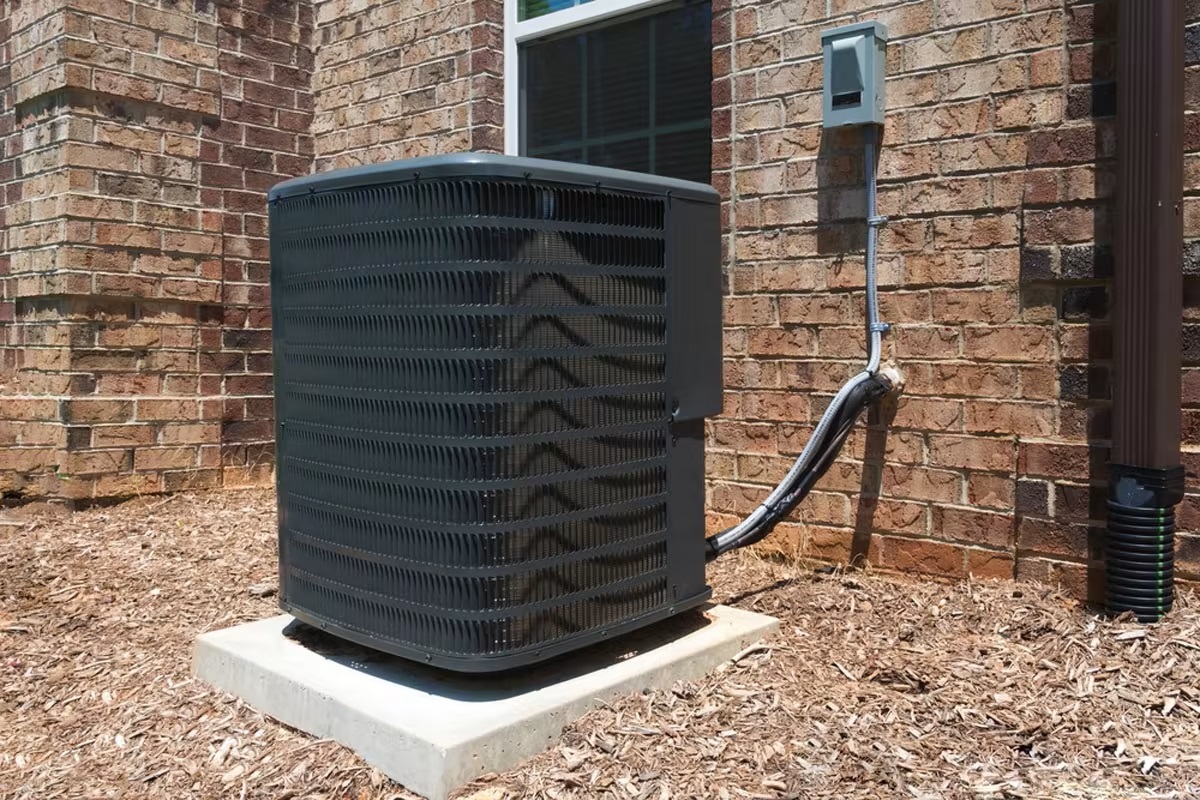

Articles
What Size Window AC Unit Do I Need
Modified: February 28, 2024
Find out the right window AC unit size for your needs in this comprehensive guide. Explore our informative articles for helpful tips and expert advice.
(Many of the links in this article redirect to a specific reviewed product. Your purchase of these products through affiliate links helps to generate commission for Storables.com, at no extra cost. Learn more)
Introduction
Welcome to the world of summer heat and sweaty days. When the temperature rises and the air becomes stifling, nothing beats the comfort of a well-functioning air conditioning unit. Whether you’re looking to cool down your bedroom, living room, or office space, finding the right window AC unit is crucial for creating a comfortable environment.
But with so many options available, how do you determine what size window AC unit is suitable for your needs? In this article, we’ll explore the factors you need to consider and provide a guide to help you select the perfect window AC unit size for your space.
Key Takeaways:
- Choose the right size window AC unit by considering room size, insulation, heat sources, and climate. Adjust BTU calculations for factors like ceiling height, windows, and sunlight exposure to ensure optimal cooling performance.
- Consulting with an HVAC professional can provide expertise in evaluating insulation, heat sources, and climate factors to ensure your window AC unit is sized appropriately for optimal performance. Stay cool and enjoy the benefits of a well-sized and properly functioning window AC unit during those hot summer days.
Read more: How Big Of An AC Unit Do I Need
Factors to Consider
When choosing the right size window AC unit, there are several crucial factors to take into consideration. These factors will help you determine the cooling capacity you need to effectively cool your space. Let’s take a closer look at each one:
Room Size
The size of your room plays a significant role in determining the appropriate window AC unit size. A larger room will require a unit with a higher cooling capacity to cool the space effectively. On the other hand, a smaller room may only need a smaller unit to maintain a comfortable temperature.
Insulation
The insulation of your space affects its ability to retain cool air. Poor insulation allows cool air to escape, which leads to increased energy consumption and ineffective cooling. If your room lacks proper insulation, you may need a slightly larger AC unit to offset the heat gain.
Heat Sources
Identifying the heat sources in your space is essential for determining the cooling capacity you need. Heat sources can include appliances, electronics, and even the number of occupants in the room. The more heat sources you have, the higher the cooling capacity required to combat the additional heat generated.
Read more: How Do I Know If My AC Needs Freon
Climate
The climate and temperature of your geographical location also play a role in determining the appropriate window AC unit size. If you live in an extremely hot and humid climate, you may need a larger unit with a higher cooling capacity to maintain a comfortable indoor environment.
By taking these factors into account, you can better assess your cooling needs and choose a window AC unit that is suitable for your space. These considerations will guide you in determining the appropriate cooling capacity required to keep your room cool and comfortable during those sweltering summer months.
Key Takeaways:
- Choose the right size window AC unit by considering room size, insulation, heat sources, and climate. Adjust BTU calculations for factors like ceiling height, windows, and sunlight exposure to ensure optimal cooling performance.
- Consulting with an HVAC professional can provide expertise in evaluating insulation, heat sources, and climate factors to ensure your window AC unit is sized appropriately for optimal performance. Stay cool and enjoy the benefits of a well-sized and properly functioning window AC unit during those hot summer days.
Read more: How Big Of An AC Unit Do I Need
Factors to Consider
– Room Size
When it comes to choosing the right size window AC unit, the size of the room is a crucial factor to consider. The cooling capacity of an AC unit is measured in British Thermal Units (BTUs), and the size of the room directly influences the BTU rating required.
The general rule of thumb is that for every square foot of space, you should have approximately 20 BTUs of cooling capacity. Therefore, the larger the room, the higher the BTU rating needed to effectively cool it. On the other hand, smaller rooms require units with lower BTU ratings to maintain a comfortable temperature.
Let’s take an example. Suppose your room measures 300 square feet. Multiply this by the recommended 20 BTUs, and you’ll find that you need an AC unit with a cooling capacity of around 6,000 BTUs. However, keep in mind that this is just a general guideline, and other factors such as insulation and heat sources should also be considered.
If the room is too small, and you install an AC unit with excessive BTUs, it may cool the space too quickly and turn off frequently. This short-cycling can result in inefficient cooling and excessive wear and tear on the unit. On the other hand, if the AC unit is undersized for a larger room, it will struggle to cool the space effectively and may run continuously, leading to increased energy consumption.
Therefore, accurately measuring the size of your room and matching it with the appropriate BTU rating will ensure efficient cooling and optimal comfort. In case of irregularly shaped rooms or spaces with high ceilings, additional calculations may be necessary to accurately determine the cooling capacity required.
Now that you understand the importance of considering the size of your room when selecting a window AC unit, let’s move on to the next factor – insulation.
Key Takeaways:
- Choose the right size window AC unit by considering room size, insulation, heat sources, and climate. Adjust BTU calculations for factors like ceiling height, windows, and sunlight exposure to ensure optimal cooling performance.
- Consulting with an HVAC professional can provide expertise in evaluating insulation, heat sources, and climate factors to ensure your window AC unit is sized appropriately for optimal performance. Stay cool and enjoy the benefits of a well-sized and properly functioning window AC unit during those hot summer days.
Read more: How Big Of An AC Unit Do I Need
Factors to Consider
Read more: How Many Btu AC Do I Need
– Insulation
Insulation plays a crucial role in the effectiveness of your window AC unit. It determines how well your space retains the cool air generated by the AC and prevents hot air from infiltrating the room. Proper insulation helps you achieve a more energy-efficient cooling system and maintain a comfortable indoor environment.
If your room is well-insulated, it will have a higher resistance to heat flow, meaning it will be more effective at keeping the cool air inside and the hot air outside. This results in less strain on the AC unit and improved energy efficiency.
On the other hand, if your room has poor insulation, cool air can easily escape through cracks, gaps, or poorly insulated walls and windows. This can lead to inefficient cooling and increased energy consumption as the AC unit has to work harder to maintain the desired temperature.
If your room has insufficient insulation, you may need to consider increasing the cooling capacity of your window AC unit. A unit with slightly higher BTUs can offset the heat gain caused by poor insulation and ensure that your room stays cool and comfortable. It’s essential to consult an HVAC professional to evaluate your room’s insulation and provide guidance on the appropriate cooling capacity for your specific situation.
In addition to insulation, it’s also a good idea to seal any air leaks in your room. This can include weatherstripping windows and doors, caulking gaps, and insulating the attic or crawl spaces. By reducing the air leakage, you can further enhance the efficiency of your window AC unit.
Considering the insulation in your room will help you make a more informed decision about the cooling capacity required for your window AC unit. By ensuring your room is properly insulated and minimizing air leaks, you can maximize the effectiveness of your AC system and create a more comfortable indoor environment.
Now that we’ve covered insulation, let’s move on to the next factor to consider – heat sources.
Key Takeaways:
- Choose the right size window AC unit by considering room size, insulation, heat sources, and climate. Adjust BTU calculations for factors like ceiling height, windows, and sunlight exposure to ensure optimal cooling performance.
- Consulting with an HVAC professional can provide expertise in evaluating insulation, heat sources, and climate factors to ensure your window AC unit is sized appropriately for optimal performance. Stay cool and enjoy the benefits of a well-sized and properly functioning window AC unit during those hot summer days.
Read more: How Big Of An AC Unit Do I Need
Factors to Consider
– Heat Sources
When determining the appropriate size of a window AC unit, it’s important to take into account the heat sources present in the room. Heat sources can contribute to the overall heat gain of the space, requiring a higher cooling capacity to maintain a comfortable temperature.
Heat sources can include various appliances like refrigerators, ovens, computers, and even lighting fixtures. The number and heat output of these sources can significantly impact the cooling requirements of the room. Additionally, the number of people occupying the room can also generate body heat and add to the overall heat load.
For example, if you have a home office with multiple computers, printers, and other electronics, these devices can produce a significant amount of heat. In this case, you may need a window AC unit with a higher cooling capacity to offset the heat generated by these appliances.
It’s crucial to identify all potential heat sources in the room and factor them into your cooling calculations. Assess the wattage or BTU output of each device and consider their usage patterns in the room. This will help you determine the additional cooling power required to balance the heat load.
Furthermore, it’s essential to regularly maintain and service appliances to ensure they operate efficiently. This can help reduce their heat output and overall impact on the cooling requirements of the room. Additionally, using energy-efficient lighting options such as LED bulbs can also contribute to a lower heat output.
By carefully considering the heat sources in your room, you can more accurately determine the appropriate size of the window AC unit needed to effectively cool the space. Understanding and accounting for these additional heat sources will help ensure that your cooling system can handle the heat load and keep the room comfortable even in the presence of multiple heat-generating devices.
Now that we’ve explored the impact of heat sources, let’s move on to the next factor – climate.
Key Takeaways:
- Choose the right size window AC unit by considering room size, insulation, heat sources, and climate. Adjust BTU calculations for factors like ceiling height, windows, and sunlight exposure to ensure optimal cooling performance.
- Consulting with an HVAC professional can provide expertise in evaluating insulation, heat sources, and climate factors to ensure your window AC unit is sized appropriately for optimal performance. Stay cool and enjoy the benefits of a well-sized and properly functioning window AC unit during those hot summer days.
Read more: How Big Of An AC Unit Do I Need
Factors to Consider
Read more: How Many Tons HVAC Do I Need
– Climate
The climate of your geographical location plays a significant role in determining the appropriate size of a window AC unit. Different climates have varying temperature ranges and levels of humidity, which directly affect the cooling requirements of a space.
If you live in a region with a hot and humid climate, the cooling demand will be higher compared to an area with a more moderate climate. High temperatures and elevated humidity levels can increase the strain on your window AC unit as it works to remove both heat and moisture from the air.
In regions with extreme heat, it’s essential to choose a window AC unit with a higher cooling capacity to effectively combat the high temperatures. This ensures that the unit can adequately cool the room and maintain a comfortable indoor environment even during the hottest days.
On the other hand, if you live in a region with a mild or temperate climate, you may be able to get away with a window AC unit with a lower cooling capacity. The moderate temperatures will require less cooling power, resulting in more energy-efficient operation.
Keep in mind that climate can also vary seasonally. If you experience significant seasonal temperature fluctuations, it’s important to consider the climate during the hottest months when selecting a window AC unit. This ensures that the unit can meet your cooling needs during the peak summer period.
In addition to temperature, the humidity level is another critical factor to consider. High humidity can make the room feel uncomfortable and sticky, even if the temperature is not extremely high. In regions with high humidity, it may be beneficial to choose a window AC unit with dehumidification features to remove excess moisture from the air.
By considering the climate of your location, you can better gauge the cooling capacity required for your window AC unit. Whether you live in a hot and humid region or a more temperate climate, understanding the climate’s impact on cooling needs will help you make an informed decision about the appropriate size of the AC unit.
Now that we’ve explored the factors to consider when choosing a window AC unit, let’s move on to understanding BTUs and their significance in determining the size of the unit.
Understanding BTU
When it comes to selecting the right size window AC unit, you will often come across the term BTU. BTU stands for British Thermal Unit, which is a unit of measurement for energy. In the context of air conditioning, BTU is used to measure the cooling capacity of an AC unit.
Definition of BTU
A BTU is defined as the amount of energy required to raise the temperature of one pound of water by one degree Fahrenheit. When it comes to air conditioning, BTUs are used to measure the amount of heat an AC unit can remove from a space per hour.
In simpler terms, the higher the BTU rating of an AC unit, the more cooling power it has. This means that an AC unit with a higher BTU rating can cool a larger space or effectively cool a smaller space more quickly.
Relationship between BTU and Cooling Capacity
The relationship between BTU and cooling capacity is straightforward. As mentioned earlier, for each square foot of space, you need approximately 20 BTUs of cooling capacity. However, this is just a general guideline, and other factors such as room size, insulation, heat sources, and climate need to be considered for a more accurate calculation.
It’s important to note that selecting an AC unit with too low of a BTU rating for your space will result in inadequate cooling, as the unit will struggle to keep up with the heat load. Conversely, choosing a unit with too high of a BTU rating for a smaller space can lead to frequent starts and stops, reducing efficiency and increasing energy consumption.
When determining the appropriate BTU rating for your window AC unit, it’s crucial to consider all the factors we discussed earlier, such as room size, insulation, heat sources, and climate. By evaluating these factors in combination with the square footage of your space, you can arrive at a more accurate BTU calculation for your cooling needs.
Now that we have a basic understanding of BTUs and their significance in determining the size of a window AC unit, let’s explore how to calculate the appropriate AC unit size based on BTUs.
Understanding BTU
– Definition of BTU
BTU, or British Thermal Unit, is a unit of measurement used to quantify energy. In the context of air conditioning, BTUs are used to measure the cooling capacity of an AC unit. Specifically, BTUs are a way of measuring how much heat an AC unit can remove from a space within a given time frame.
The definition of a BTU is the amount of energy required to raise the temperature of one pound of water by one degree Fahrenheit. It is a standardized unit that allows for consistency and comparison across different cooling systems.
When it comes to air conditioning, the cooling process involves removing heat from the indoor air. BTUs are used to measure the amount of heat that an AC unit can extract from a room per hour. The higher the BTU rating of the AC unit, the greater its cooling capacity, and the more heat it can remove from the air.
For example, an AC unit with a BTU rating of 8,000 can remove 8,000 BTUs of heat energy from a room per hour. This means that it has a higher cooling capacity compared to a unit with a lower BTU rating, such as 6,000 BTUs.
It’s important to note that while BTUs are used to measure cooling capacity, they do not directly indicate the efficiency of an AC unit. Efficiency is measured using a separate rating called the Energy Efficiency Ratio (EER) or Seasonal Energy Efficiency Ratio (SEER). BTUs solely represent the cooling capacity of the unit.
By understanding the definition of BTU, you can better comprehend the significance of this unit of measurement when selecting an appropriate window AC unit. It will help you ensure that the AC unit you choose has the necessary cooling capacity to effectively cool your space and maintain a comfortable indoor environment.
Now that we have explored the definition of BTU, let’s delve deeper into the relationship between BTUs and cooling capacity.
Understanding BTU
– Relationship between BTU and Cooling Capacity
The relationship between BTU and cooling capacity is fundamental when determining the appropriate size of a window AC unit. BTU, which stands for British Thermal Unit, is used to measure the cooling capacity or the amount of heat energy an AC unit can remove from a space within a specific time frame.
The higher the BTU rating of an AC unit, the greater its cooling capacity. In other words, an AC unit with a higher BTU rating can cool a larger space or more effectively cool a smaller space.
To give an example, imagine you have a room that measures 300 square feet. According to the general guideline of 20 BTUs per square foot, you would need an AC unit with a cooling capacity of around 6,000 BTUs. This calculation ensures that the unit can adequately cool the space without being oversized or undersized.
It’s important to note that the relationship between BTU and cooling capacity also takes into account other factors such as insulation, heat sources, and climate. These factors can impact the heat load of the room and affect the overall cooling requirements.
For instance, poor insulation or the presence of heat-generating appliances can increase the heat load, requiring a higher BTU rating to offset the additional heat. On the other hand, in regions with a hot and humid climate, a higher BTU rating might be necessary to combat the elevated temperatures and humidity levels.
When selecting a window AC unit, it’s crucial to consider all these factors in conjunction with the square footage of the space. By accurately calculating the appropriate BTU rating, you can ensure efficient cooling performance, energy savings, and optimal comfort.
Remember, choosing an AC unit with too low of a BTU rating can result in inadequate cooling, while selecting a unit with too high of a BTU rating can lead to wasted energy and inefficient operation.
Now that we have a better understanding of the relationship between BTUs and cooling capacity, let’s move on to how to determine the appropriate AC unit size based on BTU calculations.
Determining the AC Unit Size
When it comes to selecting the right size window AC unit, precise calculations based on BTUs are crucial to ensure optimal cooling performance. By accurately determining the AC unit size, you can achieve efficient cooling, energy savings, and a comfortable indoor environment. Here’s how to go about it:
BTU Calculation Formula
To calculate the appropriate AC unit size, you need to consider the square footage of the room and the factors we discussed earlier, such as insulation, heat sources, and climate. The general guideline is to have around 20 BTUs per square foot of space.
To calculate the BTUs required for a room, multiply the square footage by 20. For example, if your room measures 400 square feet, you would need a window AC unit with a cooling capacity of approximately 8,000 BTUs (400 sq. ft. x 20 BTU/sq. ft. = 8,000 BTUs).
However, keep in mind that this is a general guideline and may need adjustment depending on other factors. Factors such as poor insulation, significant heat sources, high ceilings, or a hot and humid climate may require additional BTUs to accommodate the increased heat load.
Examples of BTU Calculations
Let’s consider a couple of scenarios to further illustrate how to determine the AC unit size based on BTU calculations:
Scenario 1: A well-insulated bedroom with no significant heat sources and a moderate climate measures 250 square feet. Using the general guideline of 20 BTUs per square foot, the appropriate BTU rating for the window AC unit would be around 5,000 BTUs (250 sq. ft. x 20 BTU/sq. ft. = 5,000 BTUs).
Scenario 2: A living room with average insulation and several heat sources, such as a television, gaming console, and a large window receiving direct sunlight. The room measures 500 square feet. In this case, you would need to increase the BTU rating to account for the additional heat sources and heat gain from the sunlight. Assuming a 25 BTU per square foot guideline, the appropriate BTU rating would be around 12,500 BTUs (500 sq. ft. x 25 BTU/sq. ft. = 12,500 BTUs).
It’s important to note that these calculations serve as a starting point. If your room has unique characteristics or circumstances, it’s recommended to consult with an HVAC professional to ensure the most accurate BTU calculation for your specific situation.
Aside from BTUs, there are additional considerations that can affect the cooling performance of your window AC unit. These factors include ceiling height, the number of windows, and sunlight exposure, which we’ll explore next.
Determining the AC Unit Size
Read more: What Size Awning Do I Need
– BTU Calculation Formula
Calculating the appropriate BTU rating for a window AC unit involves considering the square footage of the room and the various factors that impact the cooling requirements. The general guideline is to have around 20 BTUs per square foot of space, but additional adjustments may be needed based on specific conditions.
The formula to calculate BTU requirements is straightforward:
BTUs = Square footage of the room x 20 BTU/sq. ft.
For example, if you have a room that measures 300 square feet, the equation would be:
BTUs = 300 sq. ft. x 20 BTU/sq. ft. = 6,000 BTUs
This calculation gives you a starting point for determining the appropriate BTU rating for your window AC unit. However, it’s important to note that this is a general guideline and may need adjustment based on specific factors such as insulation, heat sources, ceiling height, and climate.
If your room has poor insulation, you may need to increase the BTU rating to compensate for the heat gain. Likewise, if you have significant heat sources in the room or the room is exposed to direct sunlight, additional BTUs may be necessary to effectively cool the space.
Additionally, rooms with high ceilings require extra consideration. As heat rises, taller rooms may have more volume to cool, and the standard BTU calculation may not accurately account for this factor. In such cases, it’s advisable to consult with an HVAC professional who can provide more precise calculations based on the specific characteristics of your space.
By using the BTU calculation formula as a starting point and factoring in the various considerations, you can determine the appropriate BTU rating for your window AC unit. This ensures that the unit can effectively cool your room, providing the comfort and temperature control you desire.
Now that we’ve covered the BTU calculation formula, let’s move on to the additional considerations that can impact the cooling performance of your window AC unit.
Determining the AC Unit Size
– Examples of BTU Calculations
Calculating the appropriate BTU rating for a window AC unit involves considering the square footage of the room as well as other factors such as insulation, heat sources, ceiling height, and climate. Let’s take a look at a couple of examples to illustrate how these calculations work:
Example 1:
Suppose you have a well-insulated bedroom with no significant heat sources and a moderate climate. The room measures 250 square feet.
Using the general guideline of 20 BTUs per square foot, the appropriate BTU rating for the window AC unit would be:
BTUs = 250 sq. ft. x 20 BTU/sq. ft. = 5,000 BTUs
In this case, a window AC unit with a cooling capacity of around 5,000 BTUs would be suitable for effectively cooling the bedroom.
Example 2:
Consider a living room with average insulation and several heat sources, such as a television, gaming console, and a large window receiving direct sunlight. The room measures 500 square feet.
In this example, you need to account for the additional heat generated by the heat sources and the heat gain from the sunlight. Let’s assume a guideline of 25 BTUs per square foot:
BTUs = 500 sq. ft. x 25 BTU/sq. ft. = 12,500 BTUs
For this living room, a window AC unit with a cooling capacity of around 12,500 BTUs would be more appropriate to address the higher heat load and maintain comfortable temperatures.
It’s important to note that these examples serve to illustrate the basic BTU calculations. However, individual circumstances can vary, and it’s advisable to consult with an HVAC professional for a more precise assessment of your specific room and needs.
By accurately calculating the BTU requirements based on square footage and considering factors like insulation, heat sources, and climate, you can determine the appropriate size of a window AC unit. This ensures efficient cooling performance and helps you create a comfortable indoor environment.
Now that we’ve explored the examples of BTU calculations, let’s move on to additional considerations that can impact the cooling performance of your window AC unit.
Additional Considerations
Read more: What Size Gutters Do I Need
– Ceiling Height
When determining the appropriate size of a window AC unit, it’s important to consider the ceiling height of the room. Rooms with higher ceilings tend to have more volume to cool, which can impact the overall cooling capacity needed. As heat naturally rises, taller ceilings may require additional BTUs to effectively cool the space. Therefore, if your room has a higher ceiling, it may be necessary to adjust the BTU calculation and choose a window AC unit with a higher cooling capacity to accommodate the increased volume of the room.
– Number of Windows
The number of windows in a room can also affect the cooling requirements. Windows can contribute to heat gain, particularly if they are exposed to direct sunlight. Consider the size and location of the windows as well as their energy efficiency. If you have multiple windows or large windows that receive direct sunlight, they can significantly impact the heat load of the room. You may need to adjust the BTU calculation and opt for a window AC unit with a higher cooling capacity to offset the heat gain from the windows.
– Sunlight Exposure
Take into account the exposure of the room to sunlight throughout the day. If a room receives prolonged sunlight exposure, especially during the hottest parts of the day, it will experience higher heat gain. This can increase the cooling requirements. Rooms that receive a lot of sunlight may need a window AC unit with a higher BTU rating to overcome the additional heat from the sun’s rays.
Considering these additional factors alongside the BTU calculation and the square footage of the room will help you make a more informed decision when selecting the size of your window AC unit. By accounting for ceiling height, the number of windows, and sunlight exposure, you ensure that your chosen AC unit can effectively cool the space and maintain a comfortable indoor environment.
Now that we’ve covered the additional considerations, let’s recap the key points and conclude the article.
Additional Considerations
Read more: What Size Gutters Do I Need
– Ceiling Height
When determining the appropriate size of a window AC unit, it’s important to consider the ceiling height of the room. The height of the ceiling can significantly impact the cooling requirements and the overall effectiveness of the unit.
Rooms with higher ceilings tend to have more volume to cool. As heat rises naturally, taller ceilings may result in greater heat stratification. This means that the cool air generated by the AC unit may not effectively reach the lower parts of the room, leading to uneven cooling and potential discomfort.
In order to compensate for the increased volume of the room, it is advisable to adjust the BTU calculation. Simply using the square footage of the room may not accurately reflect the cooling capacity needed to cool the entire space.
If your room has a higher ceiling, it’s recommended to consult with an HVAC professional to determine the appropriate adjustment factor for the BTU calculation. They will consider factors such as the room’s volume, the height of the ceiling, and airflow patterns to provide you with a more accurate cooling capacity requirement.
By accounting for the ceiling height, you can ensure that your window AC unit is sized appropriately to effectively cool the entire room, regardless of its vertical dimensions. This will help maintain a comfortable and consistent temperature throughout the space.
Now that we’ve covered the additional consideration of ceiling height, let’s move on to discuss the number of windows in a room and its impact on cooling requirements.
Additional Considerations
– Number of Windows
When determining the appropriate size of a window AC unit, it’s important to consider the number of windows in the room. Windows can have a significant impact on the cooling requirements and the overall efficiency of the AC unit.
Windows can contribute to heat gain in a room, especially if they are exposed to direct sunlight. Sunlight coming through the windows can increase the temperature inside the room and put extra strain on the AC unit to cool it down.
The size and location of the windows are also factors to consider. Larger windows allow more heat to penetrate the room, while windows located on sunny sides of the building receive more direct sunlight. As a result, rooms with multiple or large windows, particularly those facing south or west, may require a higher cooling capacity.
It’s important to assess the energy efficiency of the windows as well. Older windows or those with poor insulation can allow more heat to transfer into the room, further increasing the cooling load.
When calculating the BTU requirements for a room with multiple windows, you may need to adjust the calculation to account for the additional heat gain. Consult an HVAC professional to determine the appropriate adjustment factor for the BTU calculation based on the number, size, location, and efficiency of the windows.
By considering the number of windows in the room, you can ensure that your window AC unit is appropriately sized to handle the cooling needs, taking into account the additional heat gain from sunlight and heat transfer through the windows. This will help maintain a comfortable and cool indoor environment.
Now that we’ve covered the additional consideration of the number of windows, let’s move on to discuss the impact of sunlight exposure on cooling requirements.
Additional Considerations
– Sunlight Exposure
When determining the appropriate size of a window AC unit, it’s important to consider the sunlight exposure in the room. The amount of sunlight a room receives throughout the day can have a significant impact on the cooling requirements and the effectiveness of the AC unit.
Sunlight can contribute to heat gain in a room, causing it to become warmer and requiring the AC unit to work harder to maintain a comfortable temperature. Rooms that receive prolonged sunlight exposure, especially during the hottest parts of the day, are likely to experience higher heat loads.
It’s important to evaluate the direction in which the windows are facing and the duration of direct sunlight exposure. Rooms with windows facing south or west generally receive more intense sunlight compared to those facing north or east.
If your room is exposed to direct sunlight, you may need to adjust the BTU calculation to account for the additional heat gain. Consulting with an HVAC professional can help determine the appropriate adjustment factor based on the sunlight exposure in your specific room.
In addition to adjusting the cooling capacity, you can also employ strategies to minimize the impact of sunlight. Installing window coverings such as blinds, shades, or curtains can help block out or reduce the amount of sunlight entering the room. This can alleviate the heat gain and reduce the workload on the AC unit.
By considering the sunlight exposure in the room, you can ensure that your chosen window AC unit is sized appropriately to effectively cool the space, even in the presence of direct sunlight. This will help maintain a comfortable and cool indoor environment throughout the day.
Now that we’ve covered the additional consideration of sunlight exposure, let’s recap the key points and conclude the article.
Conclusion
Choosing the right size window AC unit is essential for creating a comfortable indoor environment during the hot summer months. By considering various factors, you can determine the appropriate cooling capacity needed to effectively cool your space.
Factors such as room size, insulation, heat sources, and climate play a vital role in determining the size of the AC unit. The square footage of the room serves as a starting point, with a general guideline of 20 BTUs per square foot. However, adjustments may be necessary based on other considerations.
Understanding the relationship between BTUs and cooling capacity helps in selecting the appropriate AC unit. Higher BTU ratings correlate to higher cooling capacities, allowing for efficient and effective cooling of the space.
Other additional considerations include ceiling height, the number of windows, and sunlight exposure. Taller ceilings may require adjustments in the BTU calculation to account for the increased volume. Multiple or large windows can contribute to heat gain, necessitating a higher cooling capacity. Sunlight exposure can further impact the cooling requirements of the room.
It’s important to consult with an HVAC professional to ensure accurate BTU calculations based on your specific circumstances. They can provide expertise in evaluating insulation, heat sources, and climate factors, ensuring that your AC unit is sized appropriately for optimal performance.
By considering all these factors and making informed decisions, you can select the right size window AC unit that effectively cools your space, provides energy-efficient performance, and maintains a comfortable indoor environment. Stay cool and enjoy the benefits of a well-sized and properly functioning window AC unit during those hot summer days.
Frequently Asked Questions about What Size Window AC Unit Do I Need
Was this page helpful?
At Storables.com, we guarantee accurate and reliable information. Our content, validated by Expert Board Contributors, is crafted following stringent Editorial Policies. We're committed to providing you with well-researched, expert-backed insights for all your informational needs.







0 thoughts on “What Size Window AC Unit Do I Need”